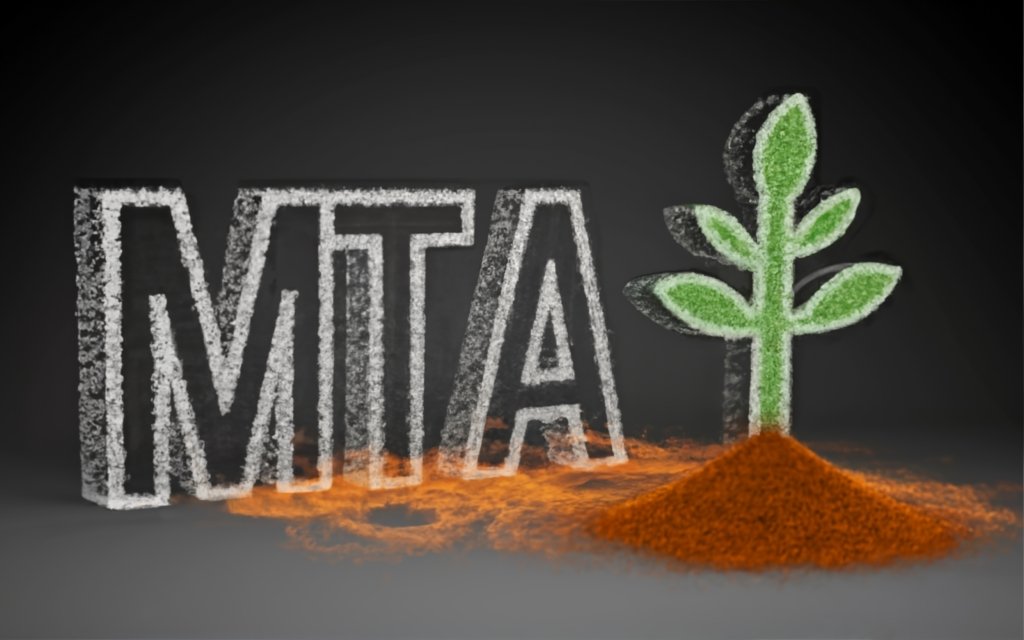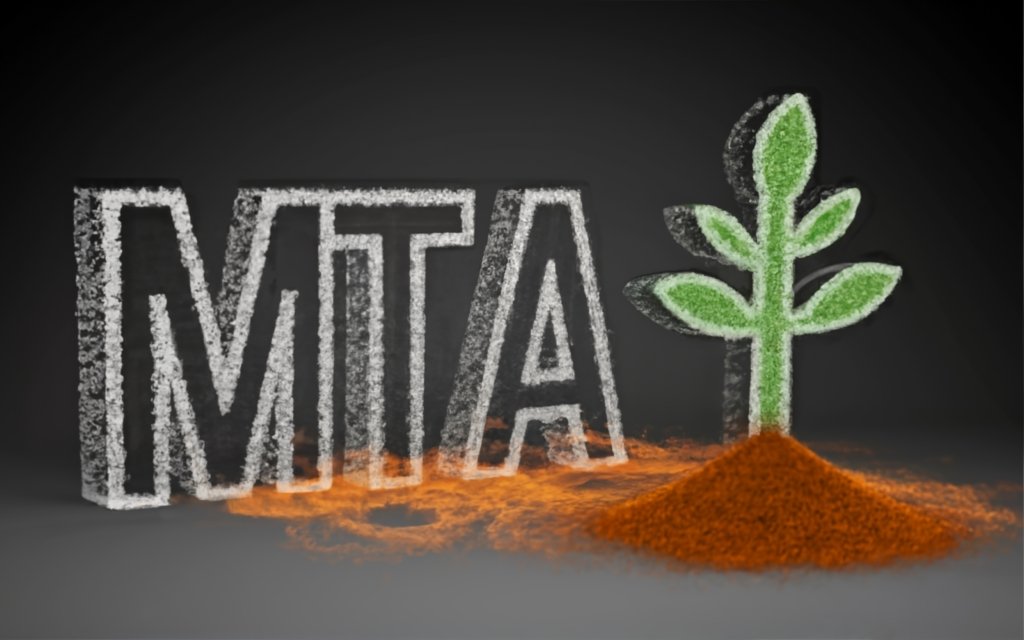Sending an email is easy – just hit send. But have you ever wondered what happens under the hood to get your message safely to the recipient’s inbox? Enter the unsung heroes of the email world: Mail Transfer Agents. MTAs act as the routing infrastructure for email, making sure messages miraculously reach their destinations. This comprehensive guide will explain everything about how MTAs operate, their key features, major providers, integration options, best practices, and more. You’ll level up your understanding of how email really works with MTAs as the secret sauce. After reading, you’ll have answers to all your questions about mail transfer agents like: – What is an MTA and how does it differ from SMTP? – What are the key features and capabilities of robust MTAs? – Should you use a cloud service or open source self-hosted MTA? – How can you integrate MTA functionality into your own apps? – What are some best practices for maximizing deliverability? Let’s lift the curtain on mail transfer agents!
What is an MTA?
An MTA, or Mail Transfer Agent, plays a crucial role in the journey of an email from sender to recipient. But what exactly does an MTA do? Let’s start with a simple definition:
A Mail Transfer Agent (MTA) is a software application or hardware device that relays email messages from senders to recipients. An MTA accepts incoming emails from mail servers or other MTAs, determines the next destination based on email addressing, and forwards the messages accordingly.
In other words, an MTA is responsible for routing and delivering emails across different servers and systems to get them to their intended inboxes. It’s like a postal service handling and distributing letters and packages.
The Role of MTAs
Every time you send or receive an email, it gets passed along between multiple MTAs that make up the core of email infrastructure. Here’s a quick look at how they fit into the email sending and receiving process:
Sending Emails
When you compose an email in an email client like Gmail or Outlook, it first gets sent to your outgoing mail server. This initial mail server is called the Mail Submission Agent (MSA).
The MSA will hand off the email to the sender’s MTA, which determines the recipient’s mail server address based on their email domain. The sender’s MTA opens up a connection with the recipient mail server’s MTA via SMTP and transfers the message.
The recipient’s MTA verifies the validity of the message, checks for spam, and accepts it into the mail server if everything checks out. Finally, the email reaches the recipient’s inbox.
Receiving Emails
On the flip side, when someone sends you an email, their mail server’s MTA connects to your domain’s MTA through SMTP and transfers the email.
Your MTA runs security checks on the incoming message and makes sure the sender is legitimate. If the message passes all checks, the MTA deposits the email into your mail server inbox.
Now you can open your email client like Outlook or Apple Mail and retrieve that message from the mail server into your personal inbox.
So in summary, MTAs securely transport emails between different mail servers until they arrive at their final destination mailboxes for recipients to read.
Types of MTAs
There are a few different types and implementations of MTAs:
SMTP Server MTAs
Many mail servers like Microsoft Exchange, Postfix, and Sendmail have built-in MTA functionality that relays messages using SMTP. SMTP is the fundamental protocol that all MTAs use to communicate with each other.
Cloud-Based MTAs
Services like SendGrid, Mailgun, and Mailjet provide cloud-hosted MTAs that handle sending high volumes of emails. This eliminates the need to maintain your own on-premises MTA hardware and software.
Web API MTAs
Other providers like Mailgun and SendGrid offer MTA functionality via web APIs. Developers can use these APIs to build custom apps and integrations for sending, receiving, and tracking emails programmatically.
On-Premises MTAs
Organizations can run MTAs on their own servers and infrastructure, which gives them more customization control. On-prem MTAs include commercial packages like Microsoft Exchange and IBM Domino.
Open Source MTAs
There are also open source MTA solutions like Postfix, Sendmail, and Exim that can be self-hosted for free. These are popular for small-scale deployments.
Hardware MTAs
Dedicated MTA appliances were common in the past before software and cloud services took over. But some organizations still use load balancing hardware MTAs to manage high volumes of email.
As you can see, today most MTAs are software-based, whether cloud-hosted, on-premises, or open source. But the core purpose remains the same – securely routing emails between servers.
In short MTAs:
- MTAs relay and transmit email messages between mail servers using protocols like SMTP.
- They form the backbone of email delivery infrastructure.
- On the sending side, MTAs transport emails from the sender’s environment to the recipient’s mail server.
- For receiving, they deposit incoming emails safely into your mailbox.
- Leading types include cloud-based, web API, on-premises, open source, and hardware MTAs.
Now that you understand the critical role of Mail Transfer Agents in the email ecosystem, let’s look at how they handle this responsibility under the hood.

How Do MTAs Work?
Now that you know what an MTA is, let’s lift the hood and take a look at how MTAs actually work under the surface.
We’ll cover:
- The step-by-step technical process MTAs use to relay messages
- Key protocols like SMTP that enable MTAs to communicate
- How MTAs differ from Mail User Agents
- The typical architecture and components of a robust MTA
Grab your propeller hat, and let’s dive in!
The Journey of an Email Through an MTA
When you hit “Send” on an email, the message takes quite a journey through a maze of mail servers and MTAs to reach the recipient’s inbox. Here is what happens behind the scenes:
- Your email client (a Mail User Agent) composes the email message and contacts your mail server to send it out.
- Your Mail Submission Agent (MSA) accepts the email from your device and performs initial checks and formatting.
- Your MSA hands the message over to your local Mail Transfer Agent (MTA). This is where the complicated routing begins.
- Your MTA looks at the email domain in the “To” address and finds the IP address for the recipient’s mail server MTA.
- Your MTA opens up an SMTP connection with the recipient MTA and transfers the email through that secure tunnel.
- The receiving MTA runs validity checks on the message, scans for viruses and spam, and verifies the sender.
- If all checks pass, the receiving MTA deposits the email into the recipient’s mail server inbox folder.
- The recipient can now open their Mail User Agent (email client) and retrieve the email from the mail server into their personal inbox.
As you can see, a properly configured MTA is critical for relaying messages reliably between mail servers using SMTP.
But how exactly does an MTA know where to send an email?
Core Protocols: SMTP, POP3, and IMAP
MTAs use a set of standardized protocols to communicate with other mail servers:
SMTP
Simple Mail Transfer Protocol (SMTP) enables sending messages between MTAs and servers. It establishes connections between sender and recipient MTAs to transfer email data.
POP3
Post Office Protocol v3 (POP3) allows MTAs to deposit incoming emails into user mailboxes hosted on a server. When you access your email client, it uses POP3 to retrieve those emails from the server inbox.
IMAP
Internet Message Access Protocol (IMAP) also retrieves emails from a server but is more advanced than POP3. IMAP keeps emails synced across devices and provides features like folders and search.
So in summary:
- SMTP handles transfers between MTAs
- POP3 and IMAP help collect those emails into end user inboxes
This is oversimplifying a bit, but you get the key idea – MTAs speak SMTP to relay messages to the next server until delivery.
MTAs vs. MUAs
We’ve mentioned Mail User Agents (MUAs) a few times. What’s the difference between an MTA and MUA?
MTAs transport emails between mail servers. They don’t interact directly with end users.
MUAs are email clients used by people to read, compose, and organize email. These include Outlook, Gmail, Apple Mail, etc.
The core difference is that MTAs focus on transmission while MUAs focus on user experience. MTAs shuttle emails between point A and point B. MUAs give users access to those emails in an interface.
Both are equally essential – without MTAs, messages wouldn’t get routed anywhere. Without MUAs, users couldn’t send or receive emails conveniently.
MTA Architecture
A full-fledged MTA has modular components that handle discrete functions:
Mail Acceptance
Validates incoming messages and rejects invalid ones. Checks for errors, spam, viruses, authentication issues, etc.
Mail Routing
Determines where to send incoming emails based on recipient addresses, domains, and IP info. Maintains lookup tables for routing.
Mail Delivery
Opens SMTP connections and transfers emails to the next destination MTA or mail server.
Mailbox Access
Deposits incoming emails into recipient mailboxes using POP3 or IMAP.
Queue Management
Stores and retries emails that fail initial delivery attempts. Prevents message loss.
Logging & Reporting
Tracks mail volume, performance, delivery data, errors, etc. for monitoring and analysis.
These components work together to provide robust, professional-grade MTA functionality far beyond basic SMTP email relaying.
In nutshell:
- MTAs use SMTP for transferring emails between mail servers.
- POP3 and IMAP help deliver messages into end user inboxes.
- MTAs focus on mail routing while MUAs focus on user experience.
- Full-featured MTAs have modular components for mail acceptance, routing, delivery, queues, logging, etc.
Now that you understand MTA basics, let’s look at some of the key features and functions expected from a business-class MTA.
Key Functions and Features of MTAs
Now that we’ve covered MTA basics, let’s explore the key features and capabilities expected from a robust, enterprise-grade MTA.
Beyond just basic SMTP message relaying, business-class MTAs provide:
- Smart email routing
- Bounce and non-delivery handling
- Queue management
- Scalability
- Security mechanisms
- Reporting and analytics
Let’s look at why these enterprise MTA features are so important.
Intelligent Email Routing
A core MTA function is determining the next stop for an email based on the recipient’s address. But this routing logic can get quite complex.
Here are some smart routing capabilities provided by advanced MTAs:
CNAME Support
Route emails seamlessly when domains use CNAME DNS records to map to parent domains.
MX Record Lookup
Identify destination mail servers via MX records and maintain a real-time DNS cache.
Fallback Routing
If the primary MX server is unavailable, try secondary MX servers.
Local Domain Delivery
Optimize message flow by identifying recipients under the same domain/server.
Global Load Balancing
Distribute email delivery across geographically dispersed mail servers.
Reputation-Based Routing
Make smarter routing decisions based on real-time spam complaints and blocks.
Policies and Rules
Apply custom SMTP routing rules and policies based on any email parameter or condition.
With enterprise-grade routing logic, MTAs can achieve reliable delivery and inbox placement.
Handling Bounced Messages
Even the best MTAs will run into bounces and non-deliveries due to invalid addresses, full inboxes, spam filters, or other issues.
Sophisticated MTAs provide intelligent bounce handling including:
Detailed Bounce Reports
Analyze bounce types, codes, reasons, and patterns to identify issues.
Bounce Logging
Record bounce summaries for compliance and forensic analysis if needed.
Bounce Alerts
Get real-time notifications when bounce thresholds are exceeded.
Use allowlists, blocklists, and reputation monitoring to minimize bounces.
Automatic Bounce Processing
Parse bounce messages, extract error codes, and disable bad addresses automatically.
Proper bounce management helps maximize deliverability over time by cleaning bad data.
Queue Management
Email queues help prevent message loss when delivery fails temporarily. MTA queues hold unsent emails and retry sending based on configurable schedules.
Key features for enterprise-grade queues include:
Dead Letter Queues
Move chronically undelivered emails out of main queues after all retries expire.
Queue Priority
Set priority levels like low, normal, or high to control message send order.
Queue Monitoring
Track queue lengths, retry schedules, lag, throughput, and other metrics.
**Queue Draining **
Dynamically adjust MTA resources to clear unusually large queues quickly.
Queue Diagnostics
Inspect queued messages and submission data to troubleshoot issues.
Robust queuing minimizes email loss so you can trust your MTA with all mission-critical communications.
Scalability
MTAs must easily scale up to handle large mail volumes during peak times like marketing campaigns, transactional email bursts, holidays, etc.
Flexible scalability options include:
Load Balancing
Add more MTA servers and load balance traffic across them.
Cloud Scaling
Leverage cloud platform autoscaling to handle spikes seamlessly.
Maintain stellar domain reputation to increase sending limits from ISPs.
Resource Planning
Monitor traffic patterns and forecast capacity needs to plan growth.
With scalable MTAs, you can support huge volumes of email without slowdowns or bottlenecks.
Security
Security is an absolute must for any enterprise MTA handling sensitive communications. Encryption, authentication, and threat protection ensures emails stay protected in transit and only legitimate senders reach inboxes.
Key protections include:
TLS Encryption
Encrypt SMTP connections between all hops to prevent snooping.
DKIM Signatures
Cryptographically sign messages with DKIM to confirm sender identity.
Use DMARC to validate legitimate use of email domains.
Reputation Monitoring
Check global IP and domain reputation to avoid spam folder filtering.
Threat Intelligence
Block known malicious IPs, domains, and geography patterns.
Attachment Scanning
Block and sanitize dangerous attachments like viruses and malware.
With MTA-level security, you can seal off email vulnerabilities and protect your brand integrity.
Reporting and Analytics
Robust reporting provides the visibility you need into MTA performance, email delivery, bounces, throttling, reputation issues, and more.
Key reporting features include:
Email Activity Logs
Audit trails of all email events like sends, opens, clicks, bounces, etc.
Traffic Volume Charts
Visualizations of monthly, daily, or hourly email throughput.
Delivery Metrics
Track email accepted, delivered, bounced, blocked, spam complaints etc.
Reputation Monitoring
Receive alerts on blacklisting events or sudden reputation drops.
Latency Tracking
Monitor SMTP connection times, MX lookup times, queue delays, etc.
Dashboard Reports
Consolidated views of all email program metrics and health.
With comprehensive analytics, you can fine-tune email performance, troubleshoot issues faster, and align deliverability with business goals.
In short:
- Advanced MTAs provide intelligent routing, bounce prevention, robust queuing, scalability, security protections, and detailed analytics.
- These enterprise-level capabilities help maximize email deliverability beyond basic SMTP message relaying.
- Reporting provides visibility into email program health so you can optimize engagement and open rates.
Now let’s look at some of the most popular MTA solutions used by businesses today.

Major MTA Providers and Software
There are a variety of popular MTA solutions used by businesses today, ranging from cloud services to open source and on-premises packages. Let’s compare the capabilities of leading options.
Cloud-Based MTAs
Cloud-hosted MTAs remove the need to maintain your own email servers and infrastructure. Leading cloud providers include:
SendGrid
- 100,000+ customers including Spotify, Airbnb, Uber
- Scales to send over 50 billion emails per month
- Free tier for low volume emails
- Plans for SMBs and enterprise
- SMTP relay or API delivery
- Email activity logs and analytics
Mailgun
- Part of Sinch; 130,000+ customers
- Free tier for 10,000 emails/month
- Pay-as-you-go pricing, no contracts
- APIs for sending, routing, and tracking
- Spam filtering and email validation
- Detailed billing reports
Mailjet
- 60,000+ customers including NBC and Virgin
- 6 billion emails sent annually
- SMTP or REST API options
- Drag-and-drop email builder
- Link tracking and email testing
- 24/7 support
Amazon SES
- Integrated with other AWS services
- Scales automatically with usage
- Buy bundles of 100,000 emails
- APIs, SMTP, and Lambda functions
- Integrates with EC2 and SNS
The convenience and scalability of cloud-based MTAs makes them popular choices today, especially for startups and growth companies.
Open Source MTAs
Self-hosted open source MTAs are free options for small-scale implementations:
Postfix
- Runs on Linux; written in C
- Used by over 3 million servers
- Robust queuing and delivery features
- Milter interface for spam filtering
- Supports LDAP directories
Sendmail
- Industry standard MTA since 1980s
- Highly customizable and pluggable
- Rule-based mail routing
- DKIM signing, SPF, spam filters
- Steep learning curve
Exim
- Default MTA for Debian/Ubuntu
- Easy deployment with utilities
- Embedded Perl for flexible coding
- Reputation and IP control lists
- Content scanning and encryption
qmail
- Focuses on security and reliability
- Segmented modular architecture
- sender-controlled queueing
- No default local delivery
For DIYers with Linux experience, open source MTAs provide extreme flexibility.
On-Premises MTAs
Commercial on-premises MTAs integrate tightly with internal infrastructure:
Microsoft Exchange
- Part of Office 365 ecosystem
- Integrated calendaring and collaboration
- Automated database maintenance
- Excellent ActiveDirectory support
- Requires Windows Server OS
IBM Domino
- Formerly Lotus Domino/Notes
- Tight NSF database integration
- Good choice for legacy migration
- Scripting with Lotusscript
- Can learn toward vendor lock-in
Oracle Communications Messaging Server
- Formerly Sun Java System Messaging Server
- Very scalable and reliable
- Adherence to open standards
- Scriptable using Tcl
- Only supports Solaris and Linux
For businesses deeply bought into commercial ecosystems, aligned on-premises MTAs may be the optimal fit.
MTA Selection Considerations
With the variety of MTAs available, focus on factors like:
- Email volume needs
- In-house vs. cloud preference
- Programming language experience
- Budget and total cost of ownership
- Company IT strategy and roadmap
Take time to evaluate both cloud and on-premises options to choose the best MTA for your unique requirements.
In nutshell:
- Leading cloud MTAs include SendGrid, Mailgun, Mailjet, and Amazon SES.
- Popular free open source options are Postfix, Sendmail, Exim, and qmail.
- On-premises MTAs like Exchange and Domino integrate with internal infrastructure.
- Consider email volume, cloud vs. self-hosted, budget, and IT roadmap when selecting an MTA.
Now that we’ve covered MTA options, let’s explore how developers can leverage MTA functionality in their applications.

Using MTA APIs for Development
Leading cloud-based MTAs like SendGrid and Mailgun provide developer APIs to incorporate advanced email functionality into custom apps.
Let’s explore key use cases for leveraging MTA APIs.
Overview of MTA API Capabilities
Instead of configuring an MTA server yourself, you can simply integrate prebuilt MTA functionality via API calls.
Common capabilities offered across providers like SendGrid, Mailgun, and Mailjet include:
Send Emails
Send transactional, marketing, or automated emails through the MTA.
Inbound Handling
Parse replies, bounces, and extracts data from incoming emails.
Email Validation
Validate inbox reachability for a list of email addresses.
Email Testing
Send tests to check rendering, spam scoring, etc. before full sends.
Tracking and Analytics
Track opens, clicks, unsubscribes, locations, devices, and more.
Event Webhooks
Trigger actions on email events like delivery, engagement, spam reports etc.
Build reusable templates for onboarding, newsletters, alerts etc.
Tools and Integrations
Access dedicated libraries, SDKs, apps, and plugin integrations.
With a robust API, developers can build custom apps enhanced with enterprise-grade MTA functionality.
Sending Transactional Email
Transactional emails include one-time automated notifications like receipts, alerts, invites, two-factor codes etc.
The MTA API allows dynamically generating and sending these automated emails at scale with:
- Personalization via merge tags populated from your app data
- Queuing for smooth deliverability across email bursts
- Scheduling emails to match user time zones
- Adding attachments on the fly like PDFs or images
- Flexible templating for consistent branding and content
- Read receipts to confirm opens
For example, when a user completes an online purchase, your app could trigger an MTA API call to send a customized order confirmation receipt email.
Parsing Inbound Email
MTAs can process replies and inbound emails via APIs to automatically extract data, attachments, headers etc.
This enables functionality like:
- Automatically updating user ticket statuses when replies arrive
- Extracting confirmation codes from account password reset emails to enable logins
- Gathering RSVP responses from event invitation emails
- Parsing support ticket details from forwarded emails to auto-open tickets
- Appending inbound emails as attachments to existing records
No manual processing needed – the MTA API handles ingesting inbound content into your apps.
Webhooks and Event Notifications
Webhooks allow your apps to take action on email events in real time.
The MTA can notify configured webhook URLs when events occur like:
- Email sent
- Email delivered
- Email opened
- Link clicked
- Email bounced or spam reported
- Unsubscribe requests
- Replies received
For example, you could automatically disable an account when bounce or spam notification webhooks arrive. Or add opened email IDs to lists for future targeting.
Webhooks enable continuous process automation based on email engagement signals.
Building Custom Integrations
With the MTA API, developers can build custom apps and integrations enhanced with advanced email capabilities like:
CRM Email Integration
Sync email activity with your CRM to enrich user records and send targeted emails.
Support Ticketing Integration
Automatically open, route, escalate, and respond to support tickets via email.
SMS and Mobile Integration
Send SMS alerts when certain emails are received or opened.
Workflow Integration
Trigger multi-step workflows based on email events via webhooks.
Marketing Automation Integration
Track email engagement metrics and segment users for follow-ups.
Payment Integration
Automatically send receipts and confirmations upon payment events.
The possibilities are endless for the types of integrations you can build on top of a robust MTA API.
In nutshell:
- MTA APIs allow sending triggered transactional emails dynamically.
- Inbound emails can be automatically parsed and processed via API.
- Webhooks enable taking custom actions on email events in real-time.
- MTA capabilities can be integrated into diverse apps like CRM, workflow, and marketing.
Now let’s switch gears and cover some best practices for configuring and operating MTAs effectively.

MTA Best Practices
Operating an MTA optimally requires following some key best practices around deliverability, security, monitoring, and compliance.
Let’s explore top tips for configuring, managing, and using your MTA effectively.
Proper DNS Setup
To avoid issues, verify your domain DNS setup supports features that MTAs rely on:
Publish SPF TXT records to specify your authorized mail servers. This allows recipients to authenticate your messages.
DKIM Records
Add a TXT record to publish your domain’s DKIM public key. DKIM signing proves emails originated from you.
DMARC Records
Create a DMARC TXT record with “p=reject” to stop unauthorized use of domains.
MST Records
Add an MTA-STS TXT record to enable recipients to only accept encrypted SMTP connections.
Valid MX Records
Ensure your domain has MX records pointing to active mail servers to accept emails.
Proper DNS configuration prevents deliverability issues and authentication errors when sending through your MTA.
Leverage Email Authentication
To maximize deliverability, leverage all modern email authentication mechanisms:
SPF
Enforce SPF checks on receiving MTAs to validate sender IP addresses.
DKIM
Cryptographically sign emails with DKIM to prove legitimacy.
DMARC
Set a strict DMARC policy to block unauthorized use of your domains.
BIMI
Publish brand logos via BIMI records to display alongside authenticated emails.
Full compliance with email authentication standards reassures recipients your messages are genuine.
Monitor Reputation and Deliverability
Keep a close eye on your domain and IP reputation to avoid blocks and spam folders:
Review Reports
Check MTA dashboard metrics for bounces, spam complaints, blocks etc.
Watch Blacklists
Monitor RBLs and blocklists to ensure no listings. Remove immediately if blacklisted.
Analyze Logs
Identify reputation-harming patterns like large volumes of bounces in traffic logs.
Heed ISP Feedback
If engaged on deliverability issues, follow ISP recommendations to restore sending capacity.
Send Test Emails
Send emails to test accounts and inboxes to confirm smooth deliverability.
Act quickly on any deliverability deterioration to protect send reputation.
Warm Up New IP Addresses
When adding new dedicated IPs for sending, properly warm them up:
- Start with small initial volumes like hundreds per IP daily.
- Slowly increase volumes as deliverability metrics stay healthy.
- Avoid abrupt spikes; scale up gradually instead.
- Warm up IPs individually before combining into shared pools.
Gradual warmup helps IP addresses build trust and avoids sudden blocks.
Follow Anti-Spam Guidelines
To avoid issues:
- Honor opt-out and unsubscribe requests immediately.
- Identify marketing emails with clear subject lines and content.
- Use permission-based subscriber lists only. Never purchase lists.
- Ensure a physical mailing address is reachable and published.
Staying compliant with anti-spam laws and CAN-SPAM guidelines will keep your sending in good standing.
In nutshell:
- Use proper DNS records and email authentication to maximize deliverability.
- Monitor reputation and deliverability closely to identify issues quickly.
- Gradually warm up dedicated IP addresses when adding new capacity.
- Follow all anti-spam regulations and best practices for compliant email.
Now that we’ve covered MTA operations, let’s discuss some common questions that arise.

FAQs About MTAs
Let’s wrap up by addressing some frequently asked questions about Mail Transfer Agents.
What is the difference between an MTA and MUA?
MTAs (Mail Transfer Agents) transport email messages between mail servers. They don’t interact with end users directly.
MUAs (Mail User Agents) are email clients used by people to manage their email, such as Outlook or Gmail.
In short:
- MTAs focus on transmission between email servers.
- MUAs focus on user experience sending and reading emails.
MTAs shuttle emails in the background between Point A and Point B. MUAs provide the interface for users to send and receive those messages.
How do I choose the right MTA provider?
Key factors when selecting an MTA include:
Email Volume
Consider the number of emails (daily, monthly, annually) you need to support both now and in future.
Budget
Factor in any costs like monthly fees for cloud MTAs or infrastructure for self-hosted options.
Technical Experience
Assess if your team has the skills to manage an open source or on-prem MTA.
Cloud vs. On-Prem Preference
Determine if you want to manage servers yourself or use a hosted cloud service.
Growth Plans
Pick an MTA that can smoothly scale with your email needs over time.
Feature Requirements
Ensure the MTA provides specific must-have capabilities your application needs.
Take time to evaluate both cloud-based and on-premises MTAs that fit your needs.
What are common MTA configuration mistakes?
Some frequent MTA misconfigurations include:
- Not having proper DNS records like SPF, DKIM, and DMARC set up
- Using a weak or fake FROM address that doesn’t match the sender domain
- Sudden spikes in volume that exceed IP reputation history
- Unsubscribe links that don’t actually unsubscribe or stop messages
- Publishing different IP ranges than what you send from
- Lacking authentications mechanisms like SPF, DKIM, and DMARC
- Poorly formatted or missing email headers
- Warming up too many new IPs simultaneously at full volume
Configuring MTAs tightly following best practices prevents many deliverability issues.
Can I use an MTA just for email sending?
Yes, absolutely. Many organizations use MTAs solely for outbound email delivery rather than also processing inbound mail.
Configuring an MTA just for sending transactional messages or newsletters is common. Features like:
- Email delivery APIs
- Scalability
- Queue management
- Bounce handling
- Reporting
Enable high-volume outbound email delivery without needing full mail server functionality.
Just ensure your MX records are pointed elsewhere for inbound mail processing.
What are alternatives to using an MTA?
For transactional email sending, popular alternatives include:
Webmail Providers
Services like Mailgun, Sendinblue, Mailjet handle sending without needing your own MTA.
CRM Email
CRMs like Salesforce, HubSpot have built-in capabilities for sending alerts and newsletters.
Transactional Email Services
Tools like Postmark and SparkPost specialize in sending triggered transactional messages.
Cloud Providers
Google Cloud, AWS SES, and Microsoft Azure provide services for scalable email sending.
So unless you really need custom on-premises MTA access, cloud-based services often suffice.
Other Frequently Asked Questions
Here are answers to some frequently asked questions about Mail Transfer Agents:
What is the difference between an MTA and MUA?
An MTA transports email between mail servers while an MUA is an end user email client for sending/receiving messages.
How does an MTA route emails?
MTAs use the SMTP protocol to communicate with other mail servers. They determine the next hop for an email based on the recipient’s domain via DNS MX records.
What are the benefits of using a cloud-based MTA?
Cloud-based MTAs handle scalability and security without needing to maintain your own email server infrastructure. They offer easy APIs for developers.
When should I use an open source vs commercial MTA?
Open source MTAs like Postfix allow greater customization control for experienced Linux admins. Commercial MTAs like Exchange simplify management with GUIs and enterprise features.
What are some best practices for managing an MTA?
Use proper DNS records, warmup IPs gradually, monitor reputation and deliverability metrics, follow anti-spam laws, and leverage email authentication.
How can I integrate my app with an MTA?
Leading MTAs offer APIs for sending emails, tracking analytics, parsing inbound messages, and triggering actions on events via webhooks.
What are some alternatives to running my own MTA?
Webmail services, CRM email tools, and cloud provider services can also handle transactional and marketing email sending needs.
How can I troubleshoot MTA delivery issues?
Review your MTA logs and metrics for bounce rates, spam complaints, blacklisting events, and other patterns indicating configuration or reputation problems.
Let me know if you need any other common MTA questions covered!
Conclusion
To recap, here are the core things to know about Mail Transfer Agents:
- MTAs act as the “postal service” for email, routing and delivering messages between mail servers.
- They speak SMTP to transfer emails to recipients, and POP3/IMAP to deposit into end user mailboxes.
- Advanced MTA features like queues, authentication, scalability, and reporting optimize deliverability beyond basic SMTP relaying.
- Leading cloud MTA providers include SendGrid, Mailgun, and Mailjet – great for developers integrating email.
- Open source options like Postfix and Sendmail offer flexible self-hosted alternatives.
- Proper DNS setup, reputation monitoring, IP warming, and compliance help MTAs avoid issues.
- MTA APIs allow sending triggered emails, parsing replies, tracking opens/clicks, and integrating with other systems.
- Alternatives like CRM email tools or transactional email services may also suit some use cases.
Hopefully this guide covered everything you need to know to choose, implement, manage, and leverage Mail Transfer Agents for your email needs!

